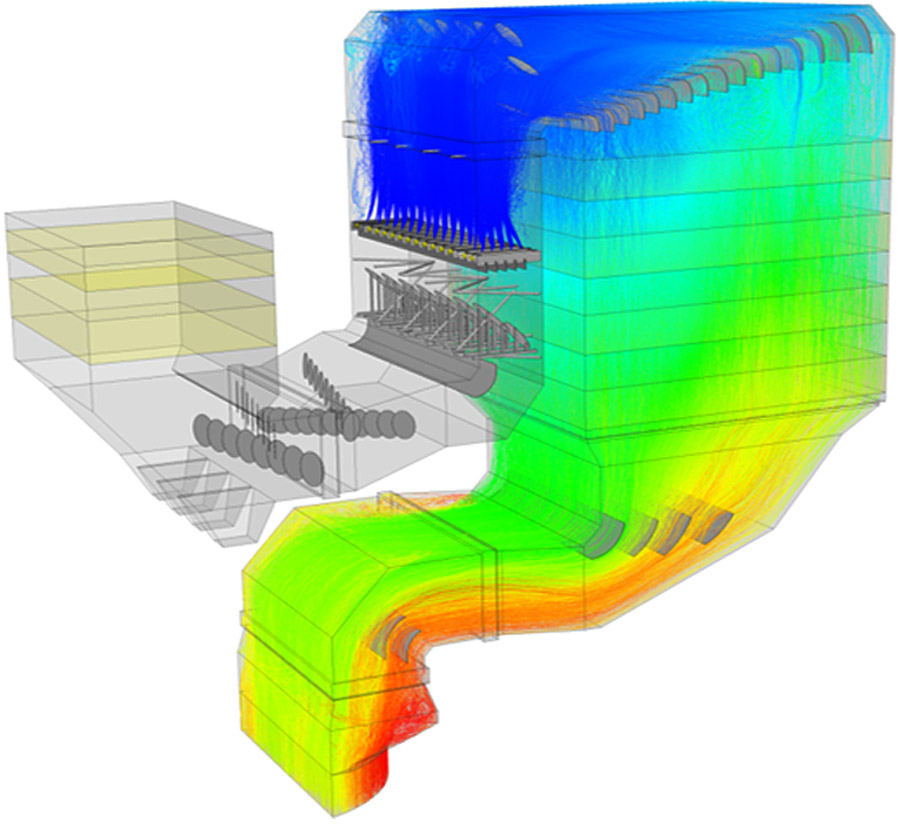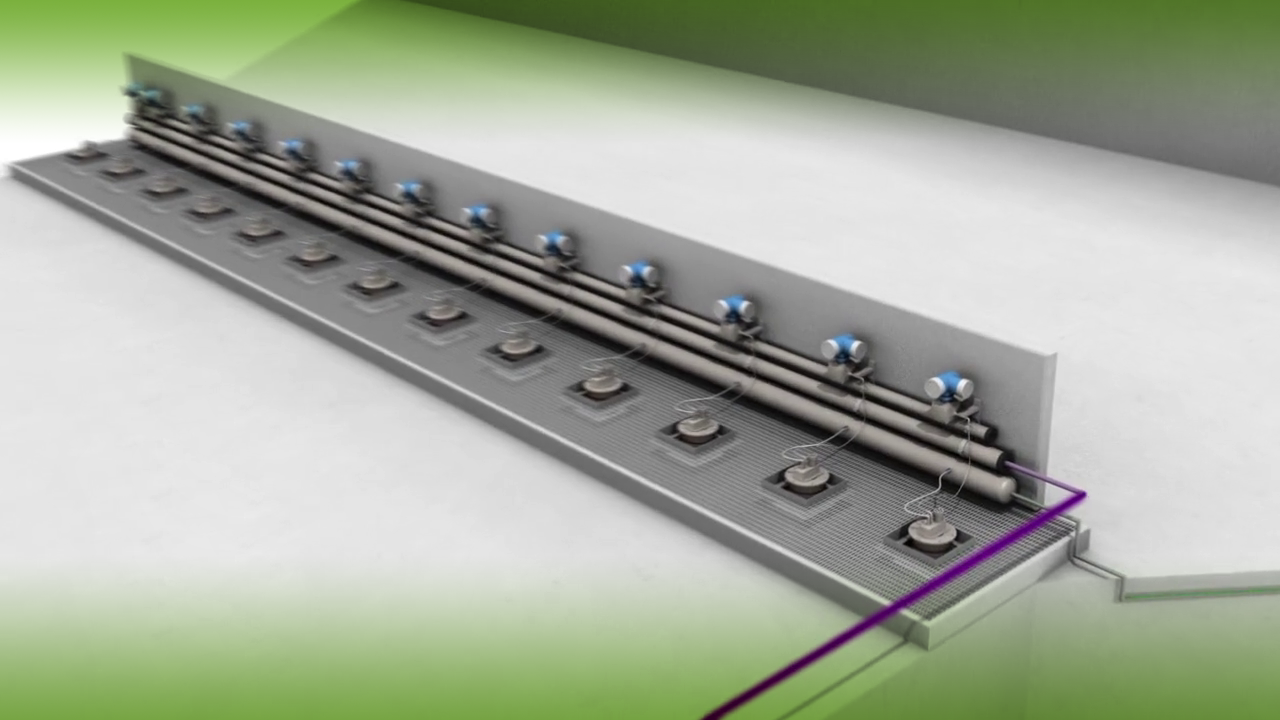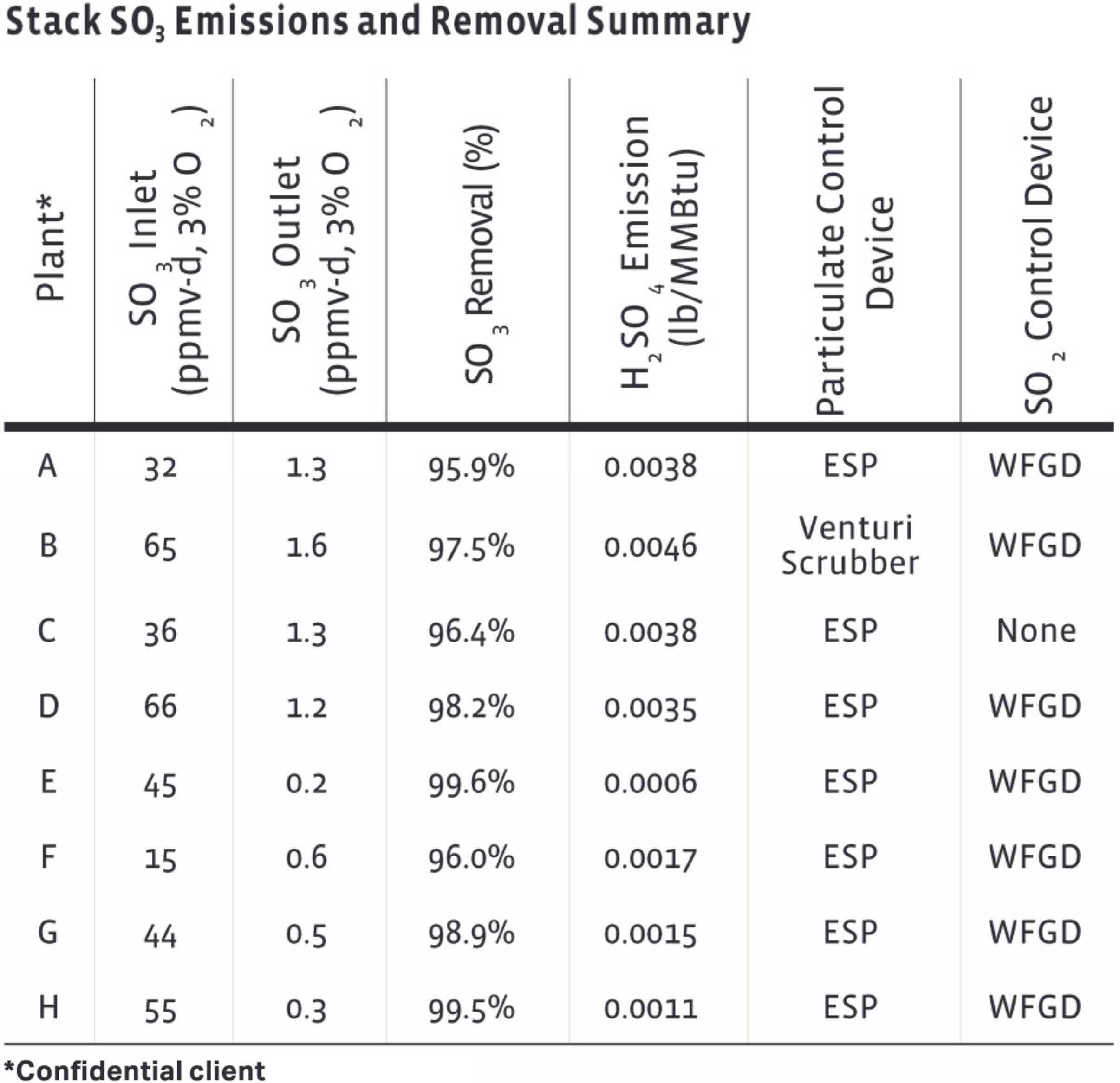SO3 Removal Technology
A proven sodium based injection technology to provide fuel specific SO3 mitigation solutions with low consumption and flexible plant configurations to generate benefits beyond opacity control.
THINGS ARE GETTING TIGHTER
With installation of SCR and wet FGD scrubbers, sulfuric acid mist (SAM) emissions increase and can become a visible issue to surrounding communities and regulators.
You need a solution that not only controls opacity, but will also meet the most stringent SAM limits, and help your plant run more efficiently. Consider the SO3 removal technology, a patented process developed by Codan Development LLC and offered by LJUNGSTRÖM.

CFD modeling of typical injection at inlet to SCR

The SBS Injection process is simple compared to the use of other sorbent injection technologies. Although the reagent is received dry to minimize delivered cost, it is immediately dissolved in warm water for ease of storage and handling. And because you’re injecting a clear solution, you don’t have to deal with slurries or solids that can plug your injection system, causing poor performance, downtime, and extra maintenance.
Computer-based flow modelling helps ensure that our proprietary injection lances, utilizing ultra-fine atomization technology, are properly designed and located to achieve uniform distribution and intimate contacting of the reagent and flue gas. This ensures maximum SO3 removal with minimal reagent usage, and avoids downstream deposition. Simple means better.
BENEFITS THAT EXCEED COSTS
SO3 presents unique challenges and opportunities in that it adversely affects plant reliability and efficiency, as well as performance of other pollution control systems. Our injection technology is not an environmental burden on your plant operating budget, and it actually generates economic benefits.
With typical operating costs of 600€-800€/ton of SO3 removed, the LJUNGSTRÖM SO3 removal injection process is competitive with alternatives, but also consider the numerous co-benefits of efficient SO3 removal, including:
- Up to 3% improvement in unit efficiency via APH
- Enhanced mercury capture, reducing or eliminating need for carbon or halogen injection
- Significant reduction in “back-end” corrosion and maintenance outage costs
- Improved SCR NOX removal performance or extended SCR catalyst life
- Reduced outages and costs for cleaning fouled air heaters
- Reduced CO2 emissions achieved with unit efficiency gains
- Capture of selenium and HCl in fly ash
- Enhanced low-load capability of SCR
You quickly see how the benefits can well exceed the operating costs, making it the control technology of choice. However, these benefits are only achievable when SO3 is efficiently removed upstream of the air heater; a unique feature of the injection process.
Because the process is relatively simple, installed capital costs are typically $10-20/kW, making it significantly cheaper than Wet ESPs and competitive with other sorbent injection technologies.
Imagine meeting your environmental requirements and reducing your plant operating cost – SO3 control that more than pays for itself.
EXPERIENCE THAT COUNTS
The LJUNGSTRÖM injection process has been successfully applied on 30 boilers, totalling over 17,000 MW. With the majority of that experience injecting upstream of the air heater or SCR, the process has consistently demonstrated SO3 removal levels of 95-99% at low reagent usage rates.
With over a decade of operating experience, the process is the only commercially demonstrated technology that can reliably remove SO3 prior to the air preheater, guarantee the elimination of sulfuric acid opacity, and provide significant plant operational benefits. You can be confident that the system will meet your current SO3 control needs, as well as more stringent future BACT requirements.
We offer the technology in a variety of ways to suit your plants’ specific needs, ranging from a core Process Technology Package to a fully engineered turnkey system including all balance of plant components.

